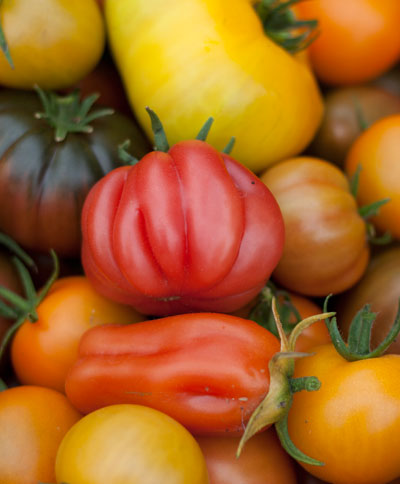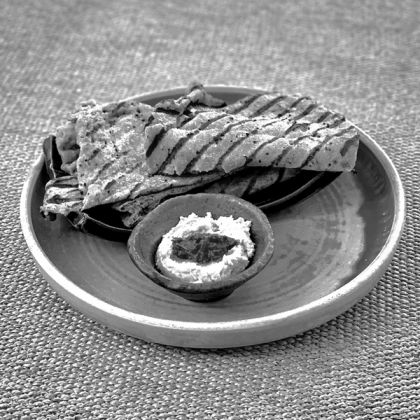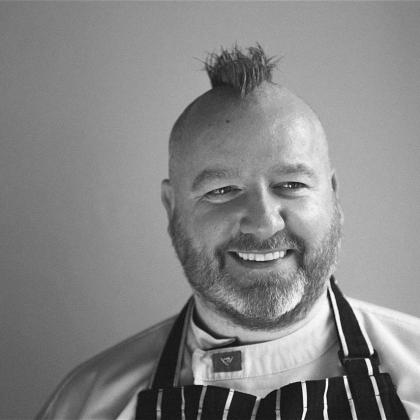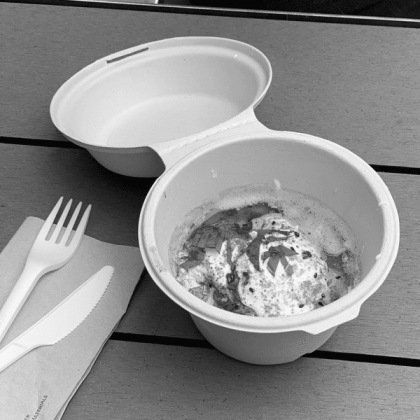“We eat first with our eyes” is one of the hoariest old clichés in the book of culinary arts, and it’s hoary and ancient for a simple reason: because it’s true.
For example, should your little darling be disinclined to finish his or her dinner, then play a colour trick on them.
Put six different colours of food on their plate and, if Dr Brian Wansink and his team at Cornell University are correct in their conclusions in a research paper published in January, then you just stand back and watch them hoover it up: green broccoli; orange carrots; white potatoes or pasta; red tomatoes; yellow corn; brown sausages.
Wansink’s team discovered that kids like lots of colours and lots of different items of food on their plates – six colours and seven ingredients – and they liked their grub to look interesting, which may explain why your Irish stew sometimes proves to be a hard sell.
Adults, however, proved to be more conservative in their ways, preferring to have three colours on the plate, and three ingredients. So don’t thrown the Irish stew out just yet.
Colour does funny things to us when it comes to food, things we scarcely understand. If you are helping yourself at the work canteen, and the chef has prepared a dish of spaghetti pomodoro, then you will help yourself to less if the plate you are carrying is white.
If the plate is red, you will help yourself to more of the delicious red-sauced pasta. It is the colour-contrast between food and plate that conditions us to take less. Without the colour contrast, we help ourselves to more.
Some cuisines have been thinking about these visual contexts in food for a very long time. Should you have the good luck to find yourself in the acclaimed Japanese restaurant Kajitsu, on East 9th Street in New York, you will find that your meal will feature five colours – blue/green; yellow; red; white, and black/purple.
Kajitsu serves shojin ryori, vegan temple cookery which has for hundreds of years been associated with Japanese Zen Buddhism. In addition to the five colours, dinner will showcase five textures – crunchy; soft; chewy; slippery, and soupy. And there will be no fewer than six tastes – bitter; sour; sweet; hot; salty and awai, which we translate as being “fleeting” or “delicate”, though perhaps “evanescent” would be better, as “awai” suggests to me the aroma of the taste – think of the smoke in smoked salmon.
The meal will also be characterised by a variety of cooking methods, including steaming, deep-frying, raw, boiled and grilled.
Colour. Texture. Taste. Technique.
But, just hang on a minute. Doesn’t the ancient shojin ryori cuisine from Japan sound remarkably like the way that children say they like to eat? Interesting looking food with lots of colours and lots of different ingredients, nicely arranged?
Indeed, the obsession with how the food looks on the plate reaches genuinely obsessive levels in Kajitsu, for some of the dishes on which the restaurant’s food is served are 200 years old: if they are damaged, then they are repaired, and used again.
But colour isn’t simply a way to aestheticise a meal, or to get kids to finish their dinner. If you have 17 minutes to spare, you can view an extraordinary TED video presentation given by Dr. Terry Wahls, an American physician who arrested and reversed her descent into multiple sclerosis by switching to a hunter-gatherer diet based on leaves, berries, grass-fed meats and sea vegetables.
Having seen her health deteriorate despite the best medical care, Dr Wahls had a eureka moment when she realised that so many modern illnesses are occuring because we have diets with insufficient micronutrients, the vitamins, minerals and fats that keep our brains healthy.
Her solution was to be found in food: “It occured to me that I should get my long list of nutrients from food. That if I did that I would probably get hundreds, maybe thousands of other compounds that science had yet to name and identify, but would be helpful to my brain and my mitochondria.” (mitochondria are the power producers in our cells.)
And so, she “designed a diet specifically for my brain cells, and my mitochondria. That’s when I became a modern day hunter gatherer.”
Dr Wahls outlines the diet she used to cure herself, making sure that each day she had “3 cups of green leaves, 3 cups of sulphur-rich vegetables and 3 cups of bright colour”, in addition to organ meats, grass-fed meats and seaweeds
3 cups of bright colour. Why? Colours, says Dr Wahl, are flavonoids and polyphenols, which support the retina, support our mitochondria and our brain cells, as well as removing toxins. Get your colours from vegetables, and also from berries and brightly coloured fruits.
So, it’s not just fish that is brain food: colourful vegetables and fruits have the elements our brains need for proper functioning. In Dr Wahls’ case, she was soon out of her wheelchair, and back on her bicycle. So, make sure you eat with your eyes every time you possibly can. Colour your dinner beautiful.
Dr Wahls video is at:
http://www.youtube.com/watch?v=KLjgBLwH3Wc)
www.terrywahls.com
First published in Healthplus, The Irish Times, 3 March 2012







